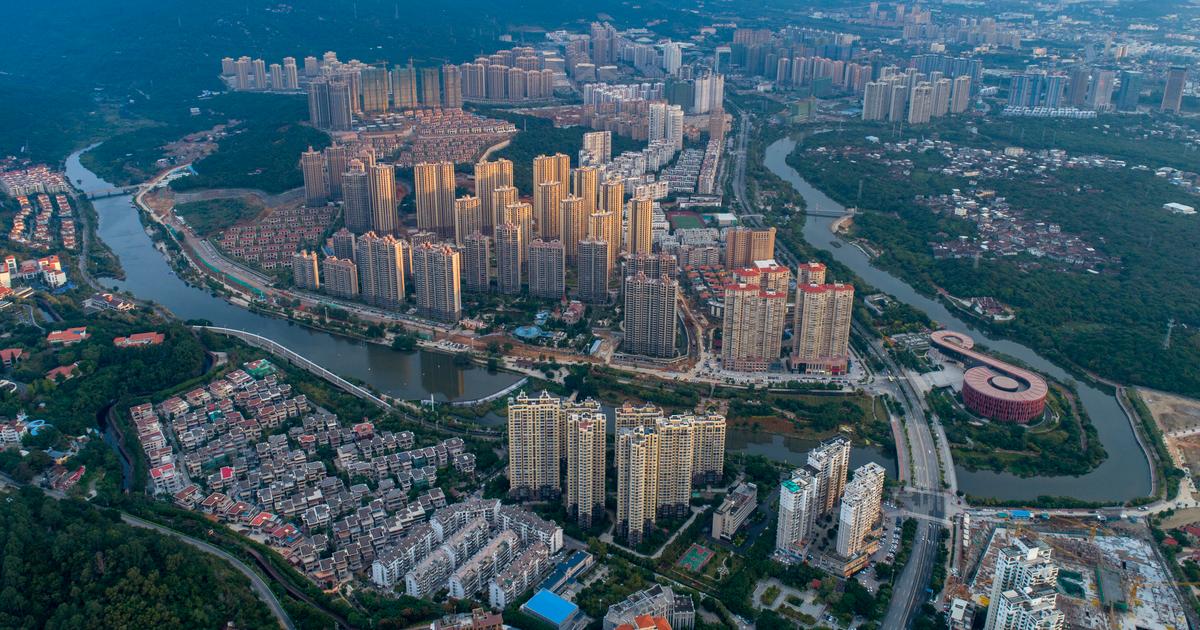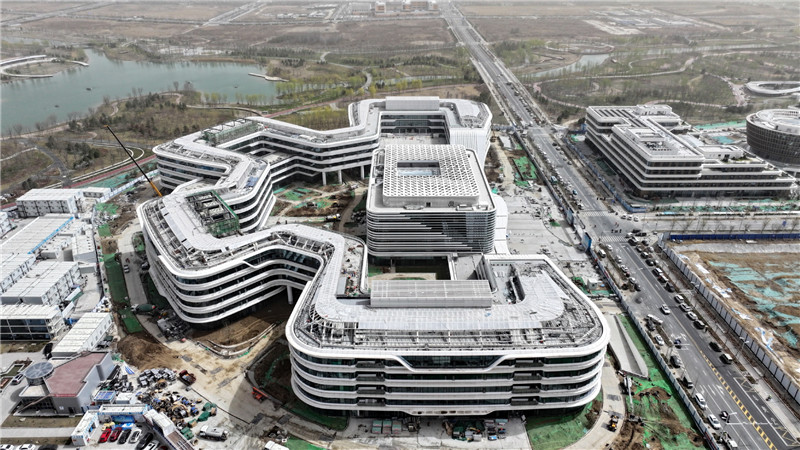China continues to transform at an incredible pace, with several cities emerging as the fastest growing urban centers in 2025. These rapidly developing destinations are attracting global attention for their economic growth, booming real estate markets, cutting edge infrastructure, and rising opportunities in technology and manufacturing. Investors, entrepreneurs, and travelers are keeping an eye on these Chinese cities as they redefine modern urban living and drive the country’s position as a global powerhouse. The top ten fastest growing Chinese cities to watch in 2025 include dynamic hubs where innovation meets tradition, offering fertile ground for business expansion, tourism development, and sustainable living.
From smart city projects and green energy solutions to expanding metro systems and futuristic architecture, each city is reshaping the landscape of modern China. With the country focusing on digital transformation, artificial intelligence, and high speed connectivity, these cities are becoming magnets for both local and international talent. They also represent some of the best opportunities for property investment, start up growth, and long term urban planning. This ranking explores the leading cities that are set to dominate economic headlines, attract foreign investment, and shape the future of China’s urban development in 2025.
Top Ten Fastest Growing Chinese Cities To Watch In 2025
10. Suqian

Suqian sits in northern Jiangsu and has become notable for rapid demographic and industrial change. Located between the megacities of Shanghai and Nanjing, Suqian benefits from transport links and spillover investment that make it attractive for light manufacturing, logistics and workforce relocation. Recent analyses highlight its exceptional population rise over the last decade and point to municipal efforts to expand urban services, affordable housing and industrial parks. That growth has drawn interest from investors researching emerging Chinese hubs and from professionals tracking China urban growth and regional opportunity.
Suqian has been bolstering infrastructure projects and encouraging small and medium sized manufacturing firms to relocate or expand, creating new job channels and steady demand for local property. The local government is prioritizing connectivity and vocational skills to turn migrant inflows into stable urban workforce growth. For Chinese city investment and fastest growing cities China, Suqian represents a clear example of how secondary cities are reshaping regional economies and drawing capital beyond traditional coastal cores.
9. Putian

Putian in Fujian province is emerging as a coastal growth corridor with expanding export oriented manufacturing and improving urban amenities. Its economic model leans on traditional industries that have modernized through automation and new supply chain links to larger ports. Putian has a growing service sector that supports trade and logistics and a steady inflow of internal migration that increases consumer demand for housing, education and healthcare.
Policy incentives aimed at small enterprise growth and export facilitation have increased business registrations and industrial output, while port upgrades and road investments improve regional integration. As a result Putian registers strongly for Chinese city investment and fastest growing cities China because it shows how mid sized coastal cities can scale quickly through targeted industrial upgrading and export activity. Smart city development and infrastructure investment are shaping its path as a relevant case for China urban growth beyond the usual megacities.
8. Wuhu

Wuhu has been reinventing itself from a traditional Yangtze River port to a diversified regional economy with strengths in manufacturing, logistics and new industrial clusters. Its strategic location inside the Yangtze River Delta gives firms rapid access to major coastal markets and inland supply chains, encouraging business relocation and industrial expansion. Local authorities have promoted advanced equipment manufacturing and high value added processing while improving river port capacity and intercity rail links to larger hubs.
That combination of connectivity and industrial policy supports population growth and rising urban service demand. Wuhu’s transition is a textbook example of China urban growth driven by regional integration and infrastructure led development. For emerging Chinese hubs and Chinese city investment, Wuhu illustrates how medium sized river cities can become logistics and manufacturing magnets in a national strategy that favors balanced regional development.
7. Anyang

Anyang blends millennia of cultural history with modern industrial redirection and new technology investment. Located in central Henan province, it has attracted industrial parks and high tech equipment manufacturers, including photovoltaic and advanced machinery firms. Economic planners are steering resources into research driven clusters and vocational training to upgrade the local labor force and reduce reliance on older heavy industries.
That shift supports export oriented factories and domestic supply chain upgrading and helps to attract young workers seeking stable employment and affordable living. Anyang is increasingly noted in fastest growing cities China and Chinese city investment because it demonstrates how inland cities are pivoting toward higher value manufacturing and regional specialization. Urban planners have been investing in public transit, digital infrastructure and business incubators to sustain growth and spark entrepreneurship across a wider set of sectors.
6. Guiyang

Guiyang has evolved from a relatively low income provincial capital to a national hub for big data and cloud services. The city attracted investment from telecom firms and cloud providers that sought lower land and operating costs while benefitting from supportive local policy. Guiyang hosts data centers and exchanges that position it as a centre for data trade and analytics, a role reinforced by both central and provincial incentives.Those moves generated strong interest around tech growth in China and fast urban revitalization, and Guiyang is frequently mentioned in coverage of China urban growth and smart city development.
Infrastructure improvements and targeted talent recruitment have supported a growing tech ecosystem that complements traditional sectors. For emerging Chinese hubs that combine affordability and digital opportunity, Guiyang stands out as a model of how data economy strategies can accelerate regional development.
5. Hefei

Hefei’s rise reflects a deliberate push into high technology, notably semiconductors, memory production and artificial intelligence related firms. Recent years saw major investments from state led funds and private technology companies that fostered clusters for memory chip production, optoelectronics and software development. That industrial depth, together with strong university to industry collaboration and government backed venture funds, reinforced Hefei’s reputation as an inland innovation hub.
The presence of major firms and research institutes makes Hefei a key example of emerging Chinese hubs and Chinese city investment. Urban policy in Hefei emphasizes talent attraction, research commercialization and transport upgrades to turn technical assets into long term economic resilience. For China urban growth and fastest growing cities China, Hefei shows how provincial capitals can leap forward by concentrating on advanced manufacturing and knowledge economy activities.
4. Chengdu

Chengdu combines cultural appeal with new economy dynamism and strong infrastructure investment that positions it as western China’s largest innovation and logistics hub. The city has significantly expanded its creative industries, digital services and green technology capacity while deepening links to the Chengdu Chongqing economic circle. Large scale projects improved airport links, high speed rail connectivity and industrial parks that appeal to both multinational corporations and local start ups.
That combination of livability and economic opportunity explains why Chengdu appears often in fastest growing cities China and China urban growth. Policy emphasis on smart city development, creative economy clustering and green urban planning supports quality of life improvements alongside GDP expansion. For Chinese city investment, Chengdu is frequently highlighted as a destination where investment potential meets strong cultural draw.
3. Xiong’an New Area

Xiong’an New Area represents a planned experiment in urban design intended to relieve Beijing’s congestion and to pilot next generation urban systems. Since its establishment it has attracted state level capital, infrastructure spending and relocation of some government and state enterprise functions. The area is explicitly positioned as a smart city prototype that emphasizes digital infrastructure, integrated transport and ecological planning. Official projections set ambitious population and investment targets as development proceeds in phases toward a long term vision.
That planned scale and policy backing make Xiong’an a focal point for smart city development and Chinese city investment. At the same time the challenge of translating infrastructure heavy investment into everyday social vibrancy and private sector magnetism is noted. For content focused on future oriented urban expansion and emerging Chinese hubs, Xiong’an is an essential case study in how national ambition meets practical urbanization challenges.
2. Wuhan
AS&GG221102-021110.jpg)
Wuhan is central China’s largest metropolis and an important transport and industrial centre that has rebounded into rapid expansion across infrastructure and high rise development. The city’s logistical assets on the Yangtze River combined with major rail and road arteries make it a natural distribution and manufacturing node for central China. In recent years Wuhan has seen large scale investment in research, higher education linked spin offs and advanced manufacturing clusters that support both domestic demand and export capacity.
Skyline growth and urban renewal projects reflect rising commercial activity and housing demand. Wuhan frequently appears in fastest growing cities China and Chinese city investment because it demonstrates inland metropolitan scale and resilience, connecting manufacturing, research and commerce. For audiences seeking regions with high urban growth potential and expanding consumer markets, Wuhan is a primary example of central China urban dynamism.
1. Shenzhen

Shenzhen remains the leading growth story and a global technology magnet. Its transformation from a coastal town to a dense innovation cluster now hosts major technology companies, venture capital networks and advanced manufacturing facilities. Continuous investment in research and development, proximity to global supply chains and deep venture ecosystems sustain a flow of start ups and corporate expansion.
Wealth creation in Shenzhen has been remarkable with rapid growth in high net worth households, making the city a major center for private capital and entrepreneurial activity. Urban density, transport investment and strong international trade linkages keep Shenzhen among the top cities for China urban growth and fastest growing cities China. Shenzhen’s role in Chinese city investment and smart city development underscores its importance as a global technology hub and an enduring symbol of modern urban growth.

